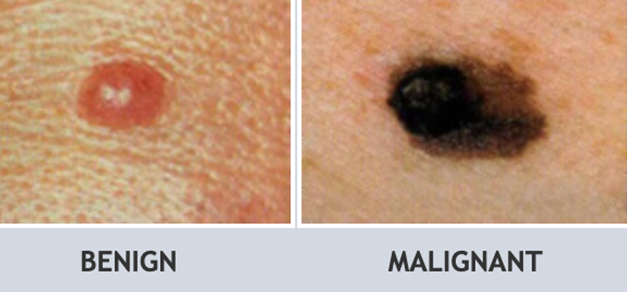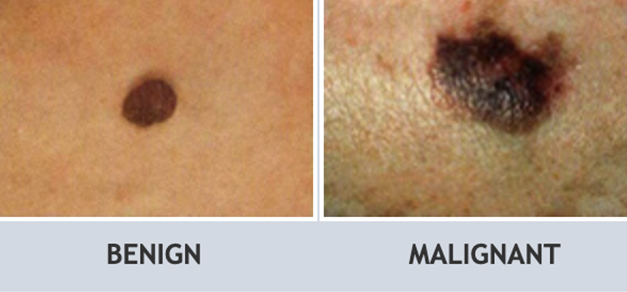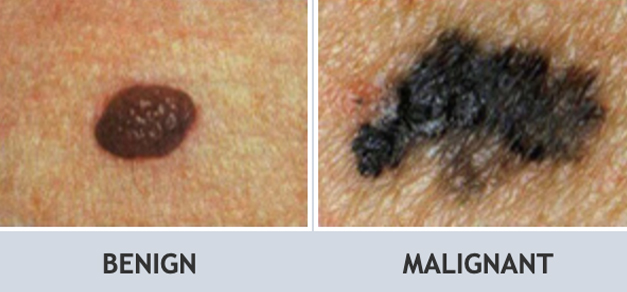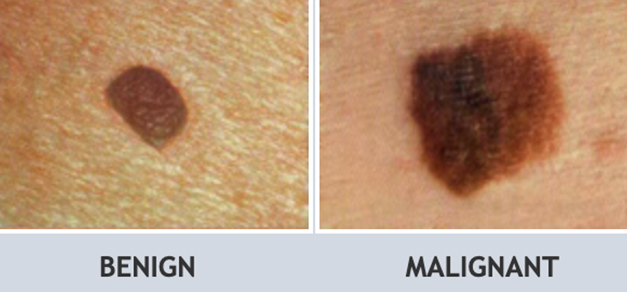
Basal and squamous cell carcinomas can vary widely in appearance. The cancer may appear as:
- a small, white or pink nodule or bump
- it can be smooth and shiny, waxy or pitted on the surface
- a red spot that's rough, dry, or scaly
- a firm, red lump that may form a crust
- a crusted group of modules
- a sore that bleeds or doesn't heal after two to four weeks
- or a white patch that looks like scar tissue.
Malignant melanoma is usually signaled by a change in the size, shape, or color of an existing mole, or as a new growth greater than 6mm in diameter on normal skin.
ABCD Criteria
The ABCD criteria developed by the American Cancer Society provide a starting-off point for the physician and an easily remembered guideline for the patient to use in self-examination for MM.
A = Asymmetry. The shape of one side of the lesion does not match the other.

C = Color. The color is uneven and variegated, containing some or all of these colors: blue, black, brown, tan, gray, red, and white.

B = Border. Rather than smooth, the edges are notched, ragged, or blurred.

D = Diameter. The lesion has changed in size or has a diameter greater than 6mm across (about the size of a pencil eraser).

Other characteristics that should alert the clinician are ulceration, bleeding, or any change in sensation such as itching. Any lesion that has a history of change warrants a biopsy to make a definitive diagnosis.
It is important to be aware of the features of the various types of nevi. Some that are benign closely resemble cancerous or precancerous lesions.
The most important thing to remember is: Get to know your skin and examine it regularly, from the top of your head to the soles of your feet. (Don't forget your back.) If you notice any unusual changes on any part of your body, have a doctor check it out.

How to get started?
Dr. Darrick E. Antell and his staff will be happy to discuss Recognizing Skin Cancer with you. Please call for a private consultation or schedule an appointment online at our office.
